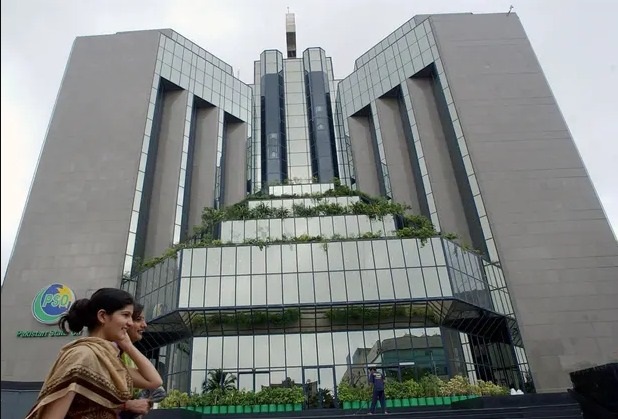Written by: Saram Maqbool
Posted on: May 11, 2023 |  | 中文
| 中文
Yasmeen Lari in front a building she designed, which is built on stilts to withstand floods
I've often wondered how architecture can help societies in a tangible way. Sure, it has shaped human experiences and lives for centuries, but can it lead to societal changes that actually better human lives? One look at Yasmeen Lari's work is enough to answer such questions. Freshly crowned the winner of the 2023 RIBA Royal Gold Medal for Architecture, Lari has become only the 6th female architect in the world to win the coveted award. But what convinced RIBA that she deserved this honor? Was it her focus on modern architecture that she produced for the elite while she was, in her own words, a ‘starchitect’? It was not. What has led to this stage is all the humanitarian work she's been doing since the early 2000s, to uplift communities and inspire positive change.
After moving with her family to the UK from Dera Ghazi Khan, Yasmeen Lari studied architecture at the now-Oxford Brookes University. She then returned to Pakistan and established her design practice, Lari Associates, in Karachi. Hailed as Pakistan’s first female architect, Lari has worked on a number of residential and corporate projects, several of which were very large-scale undertakings owing to Pakistan’s growing economy. Among her most notable projects is the Pakistan State Oil House in Karachi. Completed in 1991, it was designed to be an icon for the country’s largest oil company at the time, which explains the highly ostentatious structure - a combination of a ziggurat made of mirrored glass and two granite towers soaring into the sky.

Designed by Yasmeen Lari, Pakistan State Oil headquarters in Karachi (Picture by the Associated Press)
However, it wasn’t just visually striking buildings that Lari was designing. Her interest in the local vernacular could be seen in Karachi's Finance and Trade Center. Even though this was another large-scale project designed with primarily modern materials and techniques, she decided to introduce various traditional methods of ventilating the expansive structure. These, along with interconnected courtyards, reduced the need for artificial air conditioning.
Lari’s Anguri Bagh project was the first of its kind. This was a public housing scheme designed in 1973, for which the architect delved deep into the everyday life of the local community. She studied their needs and included solutions like terraces, where people could keep chickens and grow vegetables. Additions like elevated walkways and narrow streets would help children to play and socialize safely.
As recognizable as these projects are, they aren’t why Yasmeen Lari has been making headlines for the past few years. In the year 2000, Lari decided to retire from her practice officially, and shifted her attention mainly to writing about Pakistan’s architecture and working with the Heritage Foundation that she had founded in 1980 with her husband. In 2005 though, her focus changed after the earthquake that devastated hundreds of thousands of people. She wanted to go out there and help the people that had been displaced, but was unsure of what to do as an architect. Instead of creating prefabricated housing that would be both expensive and unsuited to the local climate, Lari started working with the affected families to rebuild their homes. She did so with the help of volunteers, sourcing mud, lime, stone and wood from the debris. Not only that, but she also taught the locals how to rebuild more safely.
“Disasters can be truly devastating and people easily fall into deep depression. But if you give them something to do, it really helps with recovery. Something people have helped to make is much more valued than something simply given.” This approach is really what differentiates Yasmeen Lari from the vast majority of architects, and even other humanitarians for that matter. By teaching people how to build, she gave them the power to take the decisions shaping their future into their own hands, rather than relying on systems that don’t always work.
Lari’s trajectory as an architect underwent a change in 2005. As part of the Heritage Foundation, she went on to develop numerous low-cost, zero-waste, and zero-carbon building techniques using bamboo, mud and lime. The team designed modular community centers in 2010 as a response to the severe flooding in KPK and Sindh, and these structures proved durable and survived floods that followed. Similarly, Lari took inspiration from the traditional Dhijji technique of Balochistan to design shelters using a bamboo framework, after the province was affected by an earthquake in 2013. Her design was found to be very effective against severe earthquakes, unlike concrete and steel buildings. The strength of these structures was that they could be rebuilt easily using the same raw materials.
The Heritage Foundation goes beyond architecture to empower people in less-privileged areas of the country. In Sindh, Lari has developed a program called “Barefoot Social Architecture”, through which her team trains villagers to make various products they sell to each other. A particular innovation of this effort is the earthen stove, which has led to safer cooking as opposed to preparing food on an open flame on the floor. The women are trained to build their stoves, boosting their self-esteem and giving them a way to generate more income by teaching this skill to other females. As a result of Barefoot Social Architecture, 80% of the communities Lari and her team work with, have been raised above the poverty line.
So, can architecture help societies in a tangible way? With people like Yasmeen Lari around, it can do that and much more. This gold medal isn’t the only accolade she has won, but is the most prestigious so far. With it, she has made her way into the list of designers like Zaha Hadid, Frank Lloyd Wright, Norman Foster and Frank Gehry, cementing her name as one of the most influential female architects of the world.
You may also like: